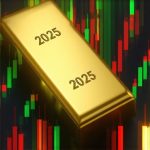Mastering Gold Trading Amidst Volatile Market Dynamics
Gold trading remains a cornerstone of wealth preservation and speculative gain, yet the inherent price volatility demands sophisticated strategies that transcend basic buy-and-hold tactics. The intricate interplay between macroeconomic shifts, geopolitical tensions, and supply-demand imbalances creates a complex landscape for traders. To excel, one must not only understand these forces but also apply nuanced trading techniques that mitigate risk while capitalizing on market fluctuations.
Advanced Analytical Frameworks for Predicting Gold Price Movements
Seasoned traders employ multi-factor models integrating technical analysis, fundamental indicators, and sentiment metrics to forecast gold price trajectories. For instance, monitoring central bank gold purchases provides critical insight into institutional demand trends, which often precede price shifts. Furthermore, tracking gold futures market activity reveals trader positioning and expected volatility. Leveraging such frameworks enhances decision-making precision, enabling traders to anticipate and respond proactively to price swings.
How Can Traders Effectively Utilize Gold Futures to Hedge Against Volatility?
Gold futures contracts offer a powerful tool for hedging against unpredictable price movements. By locking in prices through futures, traders and investors can protect portfolios from adverse market fluctuations. However, mastery requires understanding contract specifications, margin requirements, and the timing of rollovers. Combining futures with spot gold positions or ETFs can create a balanced approach that mitigates risk while preserving upside potential. For an in-depth exploration, see the ultimate guide to gold futures trading for 2025 profits.
Integrating Supply and Demand Dynamics for Smarter Trading Decisions
Effective gold trading necessitates a granular understanding of global supply chains, mining output fluctuations, and consumer demand patterns across key markets such as India and China. Shifts in these factors often trigger significant price volatility. Tracking data from credible sources like the World Gold Council enables traders to anticipate demand surges or supply constraints. This expertise, combined with real-time market intelligence, informs timing and position sizing to optimize returns.
Risk Management Techniques Tailored for Volatile Gold Markets
Implementing advanced risk management strategies is imperative to navigate gold’s price volatility. Techniques such as dynamic stop-loss orders, position diversification across physical gold, ETFs, and mining stocks, and the use of options for downside protection are essential tools. Additionally, maintaining liquidity buffers allows traders to capitalize on sudden price corrections without forced liquidation. Integrating these methods ensures resilience against market shocks.
For further expert-level insights on navigating volatile markets with strategic gold trading, explore effective gold trading strategies for volatile markets.
External authoritative source: According to a report by the World Gold Council on Gold Demand Trends, understanding nuanced demand drivers is critical for anticipating price behavior amidst global economic shifts.
Engage with our community: Share your professional experiences and trading techniques in the comments to contribute to a collective knowledge base aimed at mastering gold market volatility.
Harnessing Macroeconomic Indicators to Refine Gold Trading Strategies
In the realm of gold trading, understanding macroeconomic indicators such as inflation rates, real interest rates, and currency fluctuations is critical for anticipating price movements. Inflation expectations often correlate positively with gold prices, given gold’s role as an inflation hedge. Conversely, rising real interest rates tend to suppress gold’s allure, as they increase the opportunity cost of holding non-yielding assets. Skilled traders integrate these economic signals using econometric models and real-time data analytics to calibrate entry and exit points more effectively.
Moreover, the interplay between the US dollar strength and gold prices is a pivotal factor. Typically, a stronger dollar exerts downward pressure on gold due to its inverse relationship. However, this relationship can be nuanced by geopolitical events and central bank policies, necessitating a layered analytical approach rather than reliance on simple correlations.
Technological Innovations Shaping Modern Gold Market Analytics
The integration of artificial intelligence (AI) and machine learning (ML) algorithms is revolutionizing gold market analysis. These technologies enable sophisticated pattern recognition across vast datasets, encompassing price histories, geopolitical news, social media sentiment, and economic releases. Algorithmic models can identify subtle indicators that precede market shifts, offering traders a competitive edge by automating predictive analytics and enhancing timing precision.
Additionally, blockchain technology is enhancing transparency and traceability in physical gold supply chains, influencing investor confidence and demand dynamics. Digital gold tokens backed by physical bullion provide new avenues for liquidity and fractional ownership, bridging traditional asset classes with modern fintech innovations.
What Role Does Central Bank Gold Buying Play in Shaping 2025 Market Dynamics?
Central banks are among the largest and most influential holders of gold reserves globally. Their purchasing patterns directly affect supply-demand balances and market sentiment. In recent years, central bank gold buying has intensified, driven by diversification away from fiat currencies and geopolitical uncertainty. This trend is expected to persist into 2025, potentially exerting upward pressure on prices.
For traders and investors, monitoring central bank activity through official reports and market intelligence platforms is imperative. Understanding the motives behind these purchases—such as currency reserve diversification, inflation hedging, or geopolitical strategy—enables a more nuanced market outlook and informed trading decisions.
Explore extensive insights on this topic in our detailed analysis of how central bank gold buying influences global demand trends.
Adopting a Multi-Asset Approach to Mitigate Risk in Gold Portfolios
Given gold’s unique characteristics, combining it with complementary assets such as gold mining stocks, ETFs, and futures contracts can optimize portfolio diversification. Gold mining equities often exhibit leverage to gold prices, offering amplified returns but increased volatility. ETFs provide liquidity and ease of trading, while futures allow for strategic hedging and speculative positioning.
Balancing these instruments requires a deep understanding of their distinct risk profiles and market drivers. Dynamic allocation strategies that adjust exposure based on volatility regimes and macroeconomic forecasts can enhance risk-adjusted returns. For practical guidance, see our resource on how to build a balanced gold portfolio with ETFs and stocks.
External authoritative source: The Investopedia article on economics behind gold prices provides an expert overview on how macroeconomic forces shape gold valuation and investor behavior, underscoring the importance of a comprehensive analytical framework.
Join the conversation: We invite expert traders and investors to share your advanced strategies and insights on leveraging macroeconomic trends and technology in gold trading. Comment below or share this article with your professional network to foster collective expertise.
Decoding Market Psychology: Behavioral Finance Insights Tailored for Gold Traders
While quantitative models and macroeconomic fundamentals form the backbone of gold trading strategies, incorporating behavioral finance principles can unlock an additional layer of market insight. Gold traders who understand cognitive biases—such as loss aversion, herd behavior, and anchoring—can better interpret price movements that deviate from pure economic rationale. For example, during periods of heightened geopolitical tension, investors may irrationally flock to gold, pushing prices beyond intrinsic values, creating potential entry or exit opportunities for contrarian traders.
Moreover, recognizing the impact of sentiment-driven volatility allows traders to time their trades more effectively, avoiding common pitfalls like panic selling or euphoric buying. Advanced traders deploy sentiment indicators derived from options market skew, commitment of traders reports, and even social media analytics to gauge market mood and position themselves advantageously.
Harnessing Sentiment Analysis Algorithms: Cutting-Edge Tools for Predictive Gold Market Signals
Artificial intelligence-powered sentiment analysis tools now scan vast amounts of unstructured data—from financial news headlines to Twitter feeds—providing real-time gauges of market sentiment towards gold. These tools utilize natural language processing (NLP) to quantify bullish or bearish sentiment and detect shifts that precede price reversals. By integrating these signals with traditional technical and fundamental indicators, traders can enhance forecast accuracy and improve trade timing.
Can Sentiment Analysis Predict Sudden Gold Price Spikes Amid Geopolitical Crises?
Sentiment analysis algorithms have shown promise in flagging impending volatility triggered by geopolitical events. For instance, sudden surges in negative sentiment across news and social platforms often coincide with flight-to-safety buying in gold. However, the predictive power depends on the algorithm’s ability to filter noise and contextualize events within broader market dynamics. Expert traders combine sentiment insights with macroeconomic data and volume analysis to confirm signals and avoid false positives.
Leading platforms such as Refinitiv and Bloomberg Terminal offer integrated sentiment analytics modules that professionals rely on to stay ahead of market-moving news and social trends. For a comprehensive overview, see Refinitiv’s sentiment analysis solutions.
Integrating ESG Factors into Gold Trading: Navigating the Future of Responsible Investing
Environmental, social, and governance (ESG) considerations are increasingly shaping investor preferences and consequently influencing gold market dynamics. Mining companies with strong ESG credentials often command premium valuations, while those facing controversies may experience heightened volatility or reduced investor interest. Traders incorporating ESG data into their analysis can anticipate shifts in gold equity performance and broader market sentiment.
Furthermore, the rise of sustainable gold sourcing and traceability technologies—including blockchain-enabled certification—enhances transparency, affecting supply chain perceptions and demand. This evolving paradigm requires traders to stay informed not only about traditional economic drivers but also about sustainability trends impacting gold’s long-term value proposition.
Exploring Quantitative Models that Fuse Macroeconomic, Behavioral, and ESG Data for Gold Forecasting
Cutting-edge quantitative models increasingly merge diverse data streams—macroeconomic indicators, sentiment scores, and ESG metrics—to produce comprehensive gold price forecasts. Machine learning frameworks, such as random forests and neural networks, are adept at capturing nonlinear relationships and complex interactions among these variables. These models outperform traditional linear regressions, especially in turbulent market phases characterized by multifaceted drivers.
Implementing these advanced analytical systems requires robust data infrastructure and domain expertise to validate model outputs and adjust for overfitting risks. However, for institutional traders and hedge funds, the benefits include superior risk-adjusted performance and enhanced adaptability to evolving market conditions.
External authoritative source: According to a detailed analysis in the CFA Institute’s research on Behavioral Finance, integrating psychological factors with quantitative analysis can significantly improve investment decision-making frameworks.
Building Robust Gold Trading Models: Balancing Complexity with Practical Implementation
While sophisticated models offer deeper insights, maintaining a balance between complexity and usability is critical. Traders must ensure transparency in model assumptions and maintain agility to recalibrate strategies as new data emerges. Combining quantitative outputs with seasoned judgment and real-world intuition results in more resilient and actionable trading plans.
Future advancements may include enhanced real-time data feeds, improved NLP capabilities, and wider adoption of ESG analytics, collectively enriching gold market analysis. As these tools evolve, continuous learning and adaptation remain essential for traders aiming to harness the full spectrum of market intelligence.
Expand your expertise: Dive deeper into the intersection of behavioral finance, sentiment analysis, and ESG factors with our upcoming webinars and expert-led workshops designed for advanced gold market participants. Stay tuned for updates and join our professional trading community to exchange cutting-edge strategies and insights.
Synergizing Macro-Trends and AI-Driven Insights for Cutting-Edge Gold Market Tactics
As gold markets evolve under the influence of unprecedented global economic shifts, integrating macroeconomic indicators with advanced artificial intelligence systems unlocks a new echelon of trading precision. By harnessing machine learning algorithms that assimilate inflation forecasts, currency fluctuations, and geopolitical risk metrics, traders can dynamically adjust their strategies to reflect real-time systemic changes rather than static historical data.
How Can Advanced Machine Learning Models Enhance Gold Price Forecast Accuracy Amid Multivariate Market Drivers?
Machine learning models—especially ensemble techniques like gradient boosting and deep neural networks—excel at capturing complex, nonlinear interactions between diverse market drivers affecting gold prices. These models ingest vast datasets, including macroeconomic variables, sentiment indicators derived from alternative data sources, and ESG compliance scores of mining firms, to generate probabilistic forecasts of price movements. By continuously retraining on fresh data, they adapt to evolving market regimes, outperforming traditional econometric approaches in predictive power.
However, the sophistication of these models demands rigorous validation frameworks to prevent overfitting and ensure interpretability. Techniques such as SHAP (SHapley Additive exPlanations) values provide transparency by quantifying feature importance, enabling traders to understand the underlying rationale behind model predictions and make informed decisions.
For practitioners eager to deepen their understanding, the arXiv paper on advanced machine learning applications in commodity price forecasting offers an exhaustive review and case studies demonstrating these concepts in action.
Deciphering the Influence of ESG Integration on Gold Market Liquidity and Valuation
Environmental, Social, and Governance (ESG) factors no longer represent peripheral considerations but have become central to asset valuation and liquidity dynamics in gold markets. Investors increasingly demand transparency and sustainable sourcing, pressuring gold producers to adopt blockchain-enabled traceability and ethical mining practices. These shifts influence not only equity valuations of mining companies but also affect physical gold demand through certified green gold products.
Traders leveraging ESG analytics can anticipate liquidity shifts and valuation premiums associated with compliant assets, exploiting inefficiencies created by the transitional market phase. Moreover, regulatory developments mandating ESG disclosures are expected to accelerate this trend, reshaping investment flows in gold-related instruments.
Strategic Deployment of Multi-Layered Hedging Using Options and Futures in Volatile Environments
In markets characterized by rapid and unpredictable gold price swings, deploying sophisticated hedging strategies combining options and futures can optimize risk mitigation. For example, layered collar strategies—utilizing puts and calls with staggered strike prices—enable traders to define risk-reward profiles precisely, balancing downside protection with upside participation.
Advanced participants also exploit volatility skew and term structure in options markets to calibrate hedges sensitive to anticipated event-driven price movements. Integration with futures contracts allows for position adjustments without incurring excessive margin costs or liquidity constraints, enhancing portfolio flexibility.
Leveraging Real-Time Sentiment Analytics to Anticipate Gold Market Turning Points
The advent of natural language processing tools applied to real-time news, social media, and institutional reports provides an unprecedented window into market psychology. By quantifying shifts in sentiment polarity and intensity, traders can forecast short-term gold price inflection points, particularly during geopolitical crises or macroeconomic shocks.
Platforms such as Refinitiv and Bloomberg Terminal provide sophisticated dashboards that synthesize sentiment data with traditional technical indicators, facilitating hybrid decision-making frameworks that meld quantitative and qualitative insights.
External authoritative source: According to CFA Institute’s research on Behavioral Finance, integrating psychological factors with quantitative analysis can significantly improve investment decision-making frameworks.
Engage with us: Explore these advanced methodologies and elevate your gold trading acumen by joining our specialized webinars and interactive forums. Share your experiences, test innovative strategies, and connect with a network of expert practitioners dedicated to mastering the complexities of the gold market in 2025 and beyond.
Expert Insights & Advanced Considerations
Machine Learning Models Transform Gold Price Forecasting
Advanced machine learning techniques, including ensemble methods and neural networks, now enable traders to capture the complex, nonlinear relationships among macroeconomic indicators, sentiment data, and ESG metrics. These models adapt continuously to evolving market conditions, surpassing traditional econometric approaches in predictive accuracy and providing a dynamic edge in volatile gold markets.
Behavioral Finance Deepens Understanding of Gold Market Psychology
Incorporating behavioral finance principles allows traders to recognize cognitive biases and sentiment-driven price anomalies. This understanding helps identify contrarian opportunities during periods of irrational exuberance or panic, enhancing timing strategies beyond purely quantitative signals.
ESG Integration is Reshaping Gold Market Dynamics and Valuation
Environmental, social, and governance factors have become critical in assessing gold mining equities and physical gold demand. Traders leveraging ESG analytics can anticipate liquidity shifts, valuation premiums, and regulatory impacts, positioning portfolios to benefit from the increasing emphasis on sustainable and transparent sourcing.
Multi-Asset and Multi-Layered Hedging Strategies Enhance Risk Management
Combining gold futures, options, ETFs, and mining stocks enables sophisticated hedging that balances risk and return. Layered options strategies, such as collars, fine-tune exposure to volatility and event-driven risks, while diversified holdings mitigate portfolio shocks in uncertain markets.
Real-Time Sentiment Analytics Offer Crucial Market Turning Point Signals
Natural language processing tools analyzing financial news, social media, and institutional reports provide early indications of sentiment shifts that often precede gold price inflections. Integrating these insights with technical and fundamental analysis empowers traders to anticipate and react swiftly to market changes.
Curated Expert Resources
- World Gold Council – Gold Demand Trends: Offers authoritative data on global gold supply, demand, and institutional buying patterns essential for informed trading decisions. Explore detailed analyses here.
- Refinitiv Sentiment Analysis Solutions: Provides sophisticated NLP-driven sentiment analytics that integrate social and financial data, helping traders capture market sentiment nuances. Learn more about their tools.
- CFA Institute Research on Behavioral Finance: Delivers in-depth exploration of how psychological factors influence investing, enhancing quantitative approaches with behavioral insights. Access the comprehensive study.
- BuyingGoldNow.com – Ultimate Guide to Gold Futures Trading for 2025 Profits: A practical resource for mastering futures contracts, hedging techniques, and market timing. Discover expert strategies.
- Investopedia – Economics Behind Gold Prices: An expert overview of macroeconomic drivers shaping gold valuation, useful for integrating fundamental analysis. Explore key concepts.
Final Expert Perspective
Mastering gold trading in 2025 demands a synthesis of advanced quantitative techniques, behavioral finance insights, and ESG considerations, all underpinned by real-time data analytics. By leveraging machine learning models alongside sentiment and macroeconomic indicators, traders can anticipate complex market dynamics with greater precision. Furthermore, integrating multi-asset hedging and sustainable investment frameworks positions portfolios for resilience amid volatility and regulatory evolution.
We encourage seasoned traders and investors to deepen their expertise by engaging with the recommended resources and contributing their perspectives to the ongoing discourse. Elevate your strategic approach to gold trading by exploring advanced futures trading techniques and participating in our professional community discussions to navigate the complexities of the gold market with confidence and foresight.











This post offers a comprehensive overview of the sophisticated strategies required to navigate the volatile gold market in today’s complex economic environment. I particularly appreciate the emphasis on integrating macroeconomic indicators with machine learning models, as I’ve seen firsthand how such approaches can significantly improve predictive accuracy. My personal experience aligns with the idea that diversifying across assets like ETFs, mining stocks, and futures creates a resilient portfolio, especially when complemented by tight risk management techniques like dynamic stop-loss orders. The discussion on behavioral finance resonates with me—recognizing cognitive biases such as herd behavior can prevent costly mistakes during market panic or euphoria.
A question that comes to mind is how individual traders can best implement ESG analytics without access to high-end data platforms. Do you think retail traders can effectively incorporate ESG factors into their decision-making, or is this still mainly reserved for institutional players? I believe that as transparency and blockchain certification become more mainstream, there will be more accessible tools for everyday traders to leverage these insights effectively.